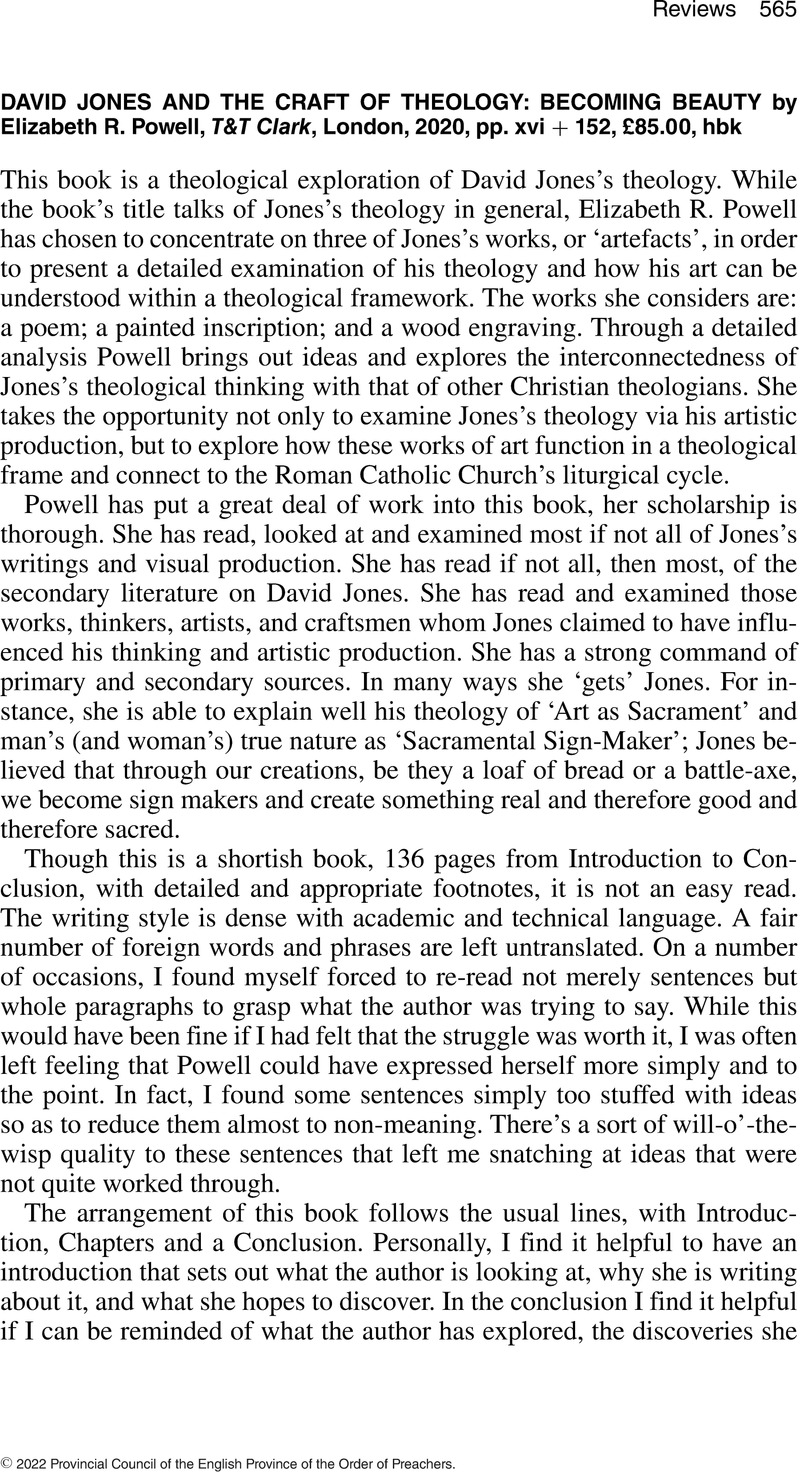No CrossRef data available.
Article contents
David Jones and the Craft of Theology: Becoming Beauty by Elizabeth R. Powell, T&T Clark, London, 2020, pp. xvi + 152, £85.00, hbk
Review products
David Jones and the Craft of Theology: Becoming Beauty by Elizabeth R. Powell, T&T Clark, London, 2020, pp. xvi + 152, £85.00, hbk
Published online by Cambridge University Press: 01 January 2024
Abstract
An abstract is not available for this content so a preview has been provided. Please use the Get access link above for information on how to access this content.

Information
- Type
- Reviews
- Information
- Copyright
- Copyright © 2022 Provincial Council of the English Province of the Order of Preachers

